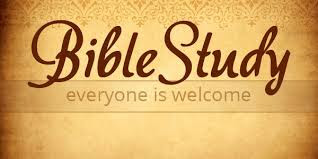ADRIAN'S BIG BIBLE STUDY PAGE
Current studies posted include "According to Matthew (29 Studies), "The Book of Romans", "The Book of Hebrews", "The Book of Philippians", "The Six Great Ends of The Church", "Suffering" "Conformation Classes" and "Dare To Dream" (a companion to Mike Slaughter's book and video series). Scroll down to find the Sessions.
According to Matthew
A study of the Biblical Book of Matthew. These 29 studies draw upon the wisdom of bible scholars old and new to explore the first gospel. In particular William Barclay, Matthew Henry and Eugene Petersen's "The Message Bible" are referenced. Matthew's gospel is compared to a movie script, with the possibility of a sequel to follow!
1 . An Introduction. People and Places.
3. Baptized
10.Authority and the Son of Man
16. Traditions, Dogs and Bread
18. Transfiguration, Testing and Taxes
23. Twists, Turns, Rebuttals and Counter-Strikes
25. Future Cast
26. Watching, Waiting and Working
28. The Darkest Days
29. Resurrection!
The Book of Romans
Romans’ is Paul’s magnificent opus on salvation. It has been one of the most influential books ever written, particularly for those of the Protestant Christian tradition. A central theme of the letter is that whether one is a Jew or a Gentile the way to God is through justification by grace through faith in Jesus Christ.
1. Greetings, Grace and Gentiles
2. Judgement, Jews and True Religion
3. How Do People Get the Gospel?
5. What Are the Results of Receiving the Gospel?
6. How Does the Gospel Work? (Part 1)
7. How Does the Gospel Work? (Part 2)
8. How Does the Gospel Work? (Part 3)
9. How Can We Be Sure Of The Gospel? 1. Examples From Israel's History
10. How Can We Be Sure Of The Gospel? 2. Contrasts of Law and Faith
11. How Can We Be Sure Of The Gospel? 3. Rejection, Grafting and Grace
12. How Should We Live? a) In Relation To Other Believers
13. How Should We Live? b) In Relation To The State and The World
14. How Should We Live? c) In Relation To Those That Differ?
The purpose of the book of Hebrews is to recall the listener (or reader) to authentic faith by recounting some of the teachings that had first inspired them and then through theological reflection, consolidate the church in the faith they had received. It’s theologically a meaty book. Indeed one of the contrasts it makes is between teaching that is like babies milk and teaching that is like solid food. It wasn’t for the new convert or the person who was an outsider. ‘The Dummies Guide’ would have to be written by somebody else. Hebrews is along the lines of a manual for those wanting to go deeper!
1. An Introduction and a Prologue!
3. Greater than Moses (and the Rest)
4. Greater than the High Priest
5. The Mysterious Melchizedek"
The Book of Philippians
Paul writes to the church in Philippi. He wants them to never to lose sight of the transforming power of true Christian joy. A joy that could shake the foundations, and overflow in streams of blessing towards others.
CREEDS AND CONFESSIONS
Studies of the Pre-Twentieth Century Creeds found in the PC(USA) "Book of Confessions" partly based on Jack Rogers book “Presbyterian Creeds – A Guide to the Book of Confessions” (WJK Books ISBN0-664-25496-9)
1. An Introduction to the Confessions
2.Who gives an iota? - The Nicene Creed
3.Ancient and Modern - The Apostles Creed
4.Oatcakes and Calvin - The Scots Confession
5.Frederick, Casper and the Professor - The Heidelberg Catechism
6. Stormy waters at the Font - The Second Helvetic Confession
7. Civil War and Faith Defining - The Westminster Confession
The Six Great Ends of the Church
Over a hundred years ago the Presbyterian Church in the USA was seeking to define what the essentials of it's faith and mission actually were. In 1910 the United Presbyterian Church of North America, following various actions between 1904 and 1910, formulated something that became known as “THE SIX GREAT ENDS OF THE CHURCH.” It references a book edited by Rev. Joseph D. Small “Proclaiming the Great Ends of the Church” that contains a number of essays on each of the statements. So if you want to go deeper... I highly recommend buying the book!
1. The proclamation of the gospel for the salvation of humankind
2. The Shelter, Nurture and Spiritual Fellowship of the Children of God
3. The maintenance of divine worship.
4. The Preservation of The Truth
5. The promotion of Social righteousness
6. The exhibition of the Kingdom of Heaven to the world
CONFIRMATION/NEW MEMBER CLASSES
This series of classes focuses on basic biblical knowledge and is evangelical in it's nature. It is not designed as a "Be all and end all" interpretation of Christian faith, but an introduction, based on some of the beliefs Protestant Churches have held over the centuries. I supplemented the curriculum by offering videos of folks talking about their Christian experience, singing some songs and activities (such as build your own church out of boxes, attendance at multi-faith events and visiting a local food pantry.) I encouraged questions and often presented a 'less orthodox' of the printed script. An underlying concern was that many of our youth did not have a biblical or church background! Recommended reading was "Basics of the Christian Faith - Made Easy" available from Rose Publishing .
Suffering
Why must we Suffer? Can Pain possibly have meaning? Can God exist in a world so full of pain and suffering? 8 studies on a questions we have all asked as people of faith.
1: Why Do Good People Suffer?
2: "Ours Not To Question Why: A Buddhist perspective on suffering"
3: "The Dark Side of the Picture"
4: "The Mystery of Suffering"
5: "The Story of Suffering Job"
6: "Case Study: The Holocaust"
7: "A Purpose in Suffering?"
8: "God with Us"
Dare To Dream









